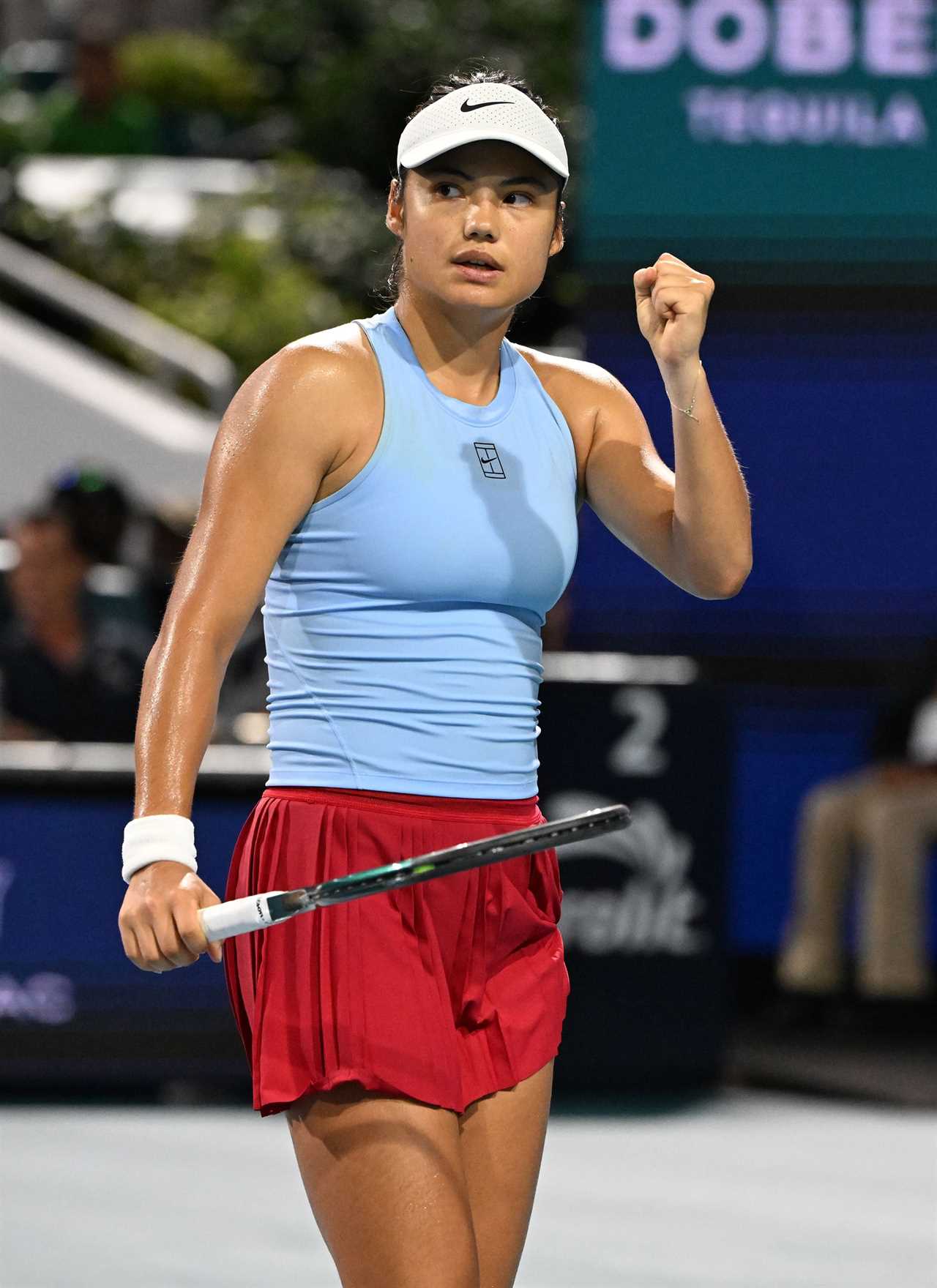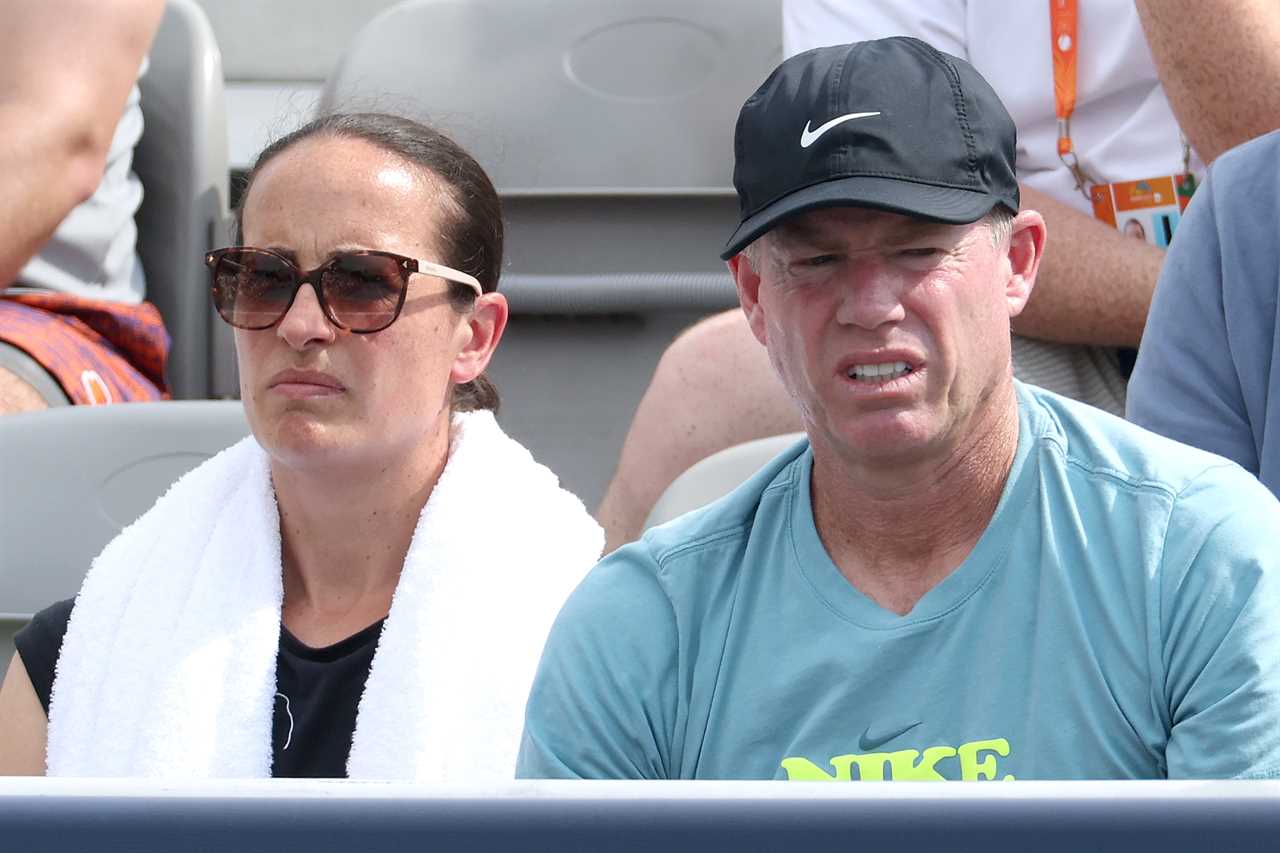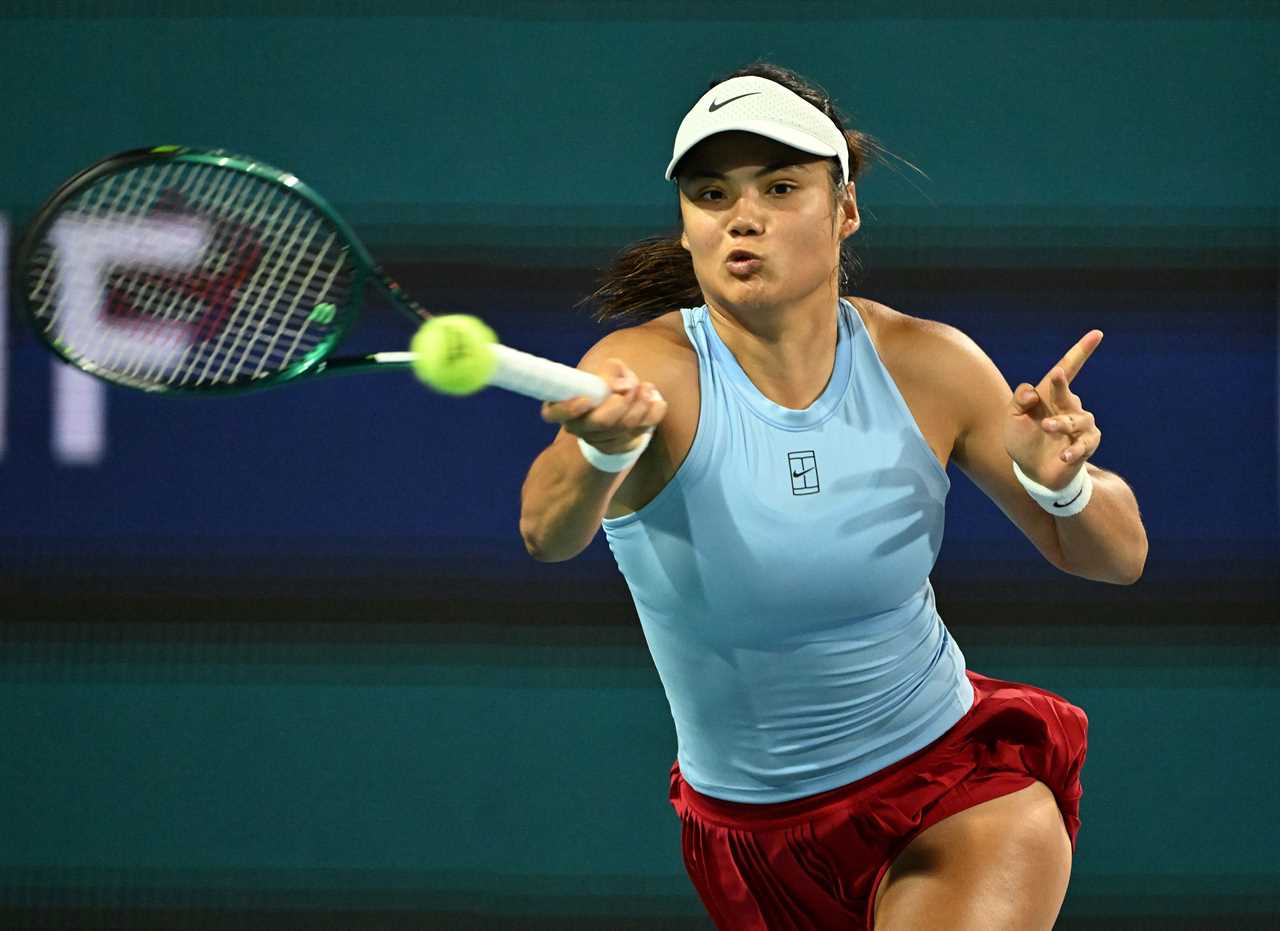
Audio Summary of the Article
Mark Petchey Granted Approval to Continue Coaching Raducanu
Emma Raducanu may have a fresh coaching arrangement as television executives have given the nod for Mark Petchey to remain her part-time coach. This development comes after the pair worked together over the past two weeks, hinting at a possible collaboration during Wimbledon.
Raducanu’s Struggle in Miami Highlights Need for Support
During her recent quarter-final match at the Miami Open, Raducanu faced a three-set loss to Jessica Pegula. The young star experienced significant dizziness, attributed to high humidity and a delayed match start, which necessitated medical attention.
Petchey Balances Coaching with Commentating Duties
At 54, Mark Petchey juggles his role as a commentator and pundit with the Tennis Channel alongside his coaching responsibilities. His decision to support Raducanu comes after she ended her trial with Slovakian coach Vladimir Platenik. TV executives appear supportive of Petchey maintaining both roles, similar to other Tennis Channel personalities like Lindsay Davenport and Paul Annacone who have managed dual careers.
Strong Rapport Fuels Coaching Success
Petchey, who previously coached Andy Murray during his teenage years, has a longstanding relationship with Raducanu. Their partnership during the 2020 Covid pandemic and recent intensive training sessions in Florida demonstrate their effective teamwork. This mutual understanding could prove beneficial as Raducanu prepares for upcoming tournaments.

Cryptic Social Media Message Sparks Speculation
While Petchey has yet to comment publicly on the potential continuation of his coaching role, he shared a thought-provoking message on social media: “I think most advice is a reflection of the giver’s limits, not your potential.” This statement has left fans and analysts wondering about his views on coaching and player development.
Raducanu Reflects on Her Miami Performance
Despite the loss, Raducanu expressed pride in her performance. “I just felt really dizzy, I felt a bit faint,” she explained. The Kent-based player acknowledged the challenge posed by the conditions and praised Pegula’s skill, stating, “Jessica played a really good match from start to finish.” Raducanu remains optimistic, highlighting the positives from her recent matches and her determination to regain her competitive edge.
Looking Ahead: Upcoming Competitions and Strategic Plans
Raducanu’s next appearances include Britain’s ties against Germany and Holland in the Billie Jean King Cup Qualifiers on April 11-12. Following these, she will focus on the European clay-court season, leading up to the French Open in late May, before transitioning to grass-court events. When asked about her immediate future, Raducanu emphasized the need to reassess her strategy: “I need to kind of just figure things out and then I’ll make a plan from there.”
Potential Wimbledon Partnership on the Horizon
If Raducanu and Petchey decide to extend their collaboration, Wimbledon could see the pair working together to enhance her performance on the grass courts. Petchey’s experience and their established connection offer a promising foundation for Raducanu’s continued growth and success in the sport.

Raducanu’s Determination Shines Through Adversity
At just 22, Raducanu has already made significant strides in her tennis career. Her ability to compete fiercely despite physical setbacks underscores her resilience and competitive spirit. As she navigates the challenges of professional tennis, the support from coaches like Petchey could play a pivotal role in her journey toward further achievements.
Frequently Asked Questions
How has tennis evolved over the years?
Tennis equipment has undergone significant evolution since the game's early days. Original rackets had string guts made of animal intestines. Over the years, technology has introduced new materials like graphite, titanium, and carbon fiber, making rackets lighter and more powerful. The balls themselves have changed as well, from being hand-sewn into manufactured rubber pressurized balls which provide consistent bounce. The evolution of the game has resulted in a more dynamic, athletic play.
What is the significance grass courts in Wimbledon?
Wimbledon's traditional grass surface is the only Grand Slam played today. The low-bouncing, fast game of grass tests players' skills in unique ways. Wimbledon began in 1877, but is now known by its official name, The Championships of Wimbledon. It has a long history and a strict dress code. Wimbledon's venerable grass courts are often regarded as the pinnacle of a tennis players career.
What are tennis' four Grand Slam tournaments?
The four Grand Slams, or Majors as they are sometimes called, are among the most prestigious tournaments in professional tennis. They consist of the Australian Open in January, the French Open in May and June, Wimbledon in June and July, and the US Open in August and September. These tournaments have a rich history and are known for the high level of competition. They also offer significant prize money, ranking points, and a great deal of prestige. Grand Slams are regarded as one of tennis' greatest achievements.
How does playing on different surfaces affect tennis matches
The style and speed of tennis matches can be affected significantly by different playing surfaces. Grass court games are usually faster, favoring players who have an attacking style and big servers. Clay courts have a slower ball speed and a higher bounce. They are better for players with tenacity and topspin. Hard courts offer a playing surface that is balanced, neither too fast or too slow. This rewards players who are well-rounded. These surface variations require different approaches to match strategy and can influence match outcomes.
What role have tennis icons played in popularizing the sport?
Tennis icons have played a pivotal role in popularizing the sport globally. Throughout the sport's history, players with charisma and skill like Billie Jean King have captured public imagination. Their achievements on the court and personalities off it have not only drawn fans to the game but also inspired younger generations of players to take up this sport. Their legacies go beyond their titles. They shape the culture of tennis and its marketplace.
Statistics
- Graphite became a popular material for tennis racquets in the 1980s, with over 90% of professional players now using graphite or graphite composite racquets.
- Since the Open Era began in 1968, allowing professional players to compete in the Grand Slams, the United States has produced the most Grand Slam singles titles across men's and women's competition.
- As of 2023, Wimbledon remains the oldest tennis tournament in the world and is considered by many to be the most prestigious.
- Lawn tennis, which evolved into the game we know today, adapted its point system from the jeu de paume, with theories suggesting its increments represent the face of a clock.
- The four Grand Slam tournaments collectively attract over 3.5 million spectators in person, highlighting tennis's enduring appeal.
External Links
How To
How to Choose the Right Tennis Racket for Your Game
If you want to find the best tennis rackets, it is important to consider your style and level of expertise. Beginners benefit from oversized rackets because they have a larger sweet-spot, while intermediates can use midplus rackets to balance power with control. For precision, advanced tennis players choose control or mid-size rackets. Additionally, assess the racket's weight, balance, and string pattern. You can improve your game by consulting with a coach, racket specialist or other tennis professionals.
 CricketBoxingFormula 1GolfHorse RacingPremier LeagueTennisPrivacy PolicyTerms And Conditions
CricketBoxingFormula 1GolfHorse RacingPremier LeagueTennisPrivacy PolicyTerms And Conditions
